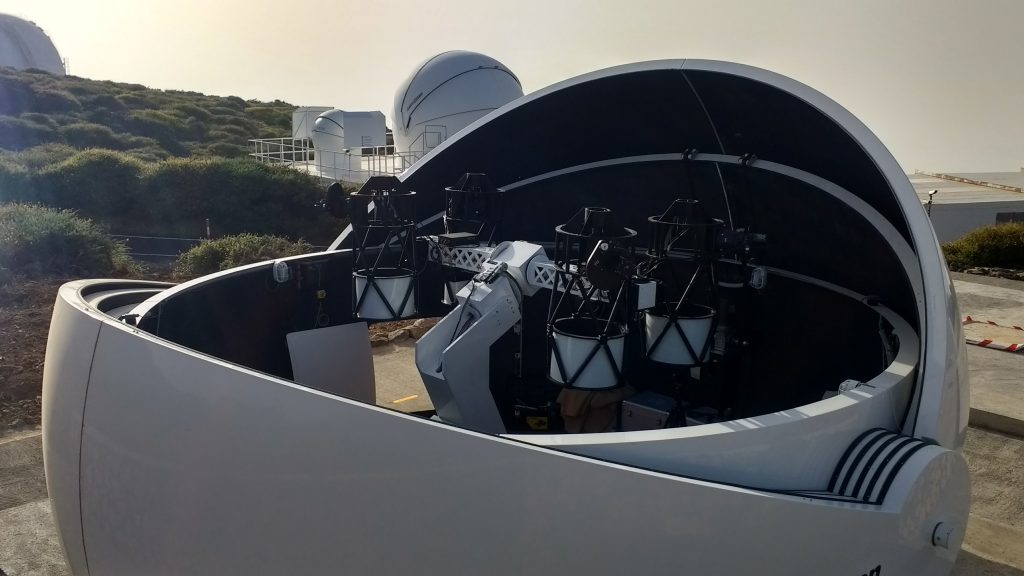

The Isaac Newton Telescope is my new favourite telescope. Most telescopes the observer isn’t allowed to touch the controls for the telescope itself; we just control the instrument. At the INT you observe alone, meaning you control both. Driving the telescope is easier than I expected. For the most part it’s done from the command line — just type ‘gocat’ and the name of your star and the telescope moves itself to point to it. There are times though that you have to switch the telescope over to ‘engineering mode’, at which point you drive it with the big bank of switches on the right. There’s a window through which you can see into the telescope dome, and a microphone so you can hear the various parts moving. You also use the same buttons to open the dome up at the start of the night.

At the end of the night you have to bring the telescope into ‘access park’, ie move it so that the end of the telescope is reachable from the balcony. This is the most intimidating part of the experience, as you have to override some of the safety checks to bring it so low, meaning that a couple of alarms will start going off — you then watch the telescope moving towards the balcony pretty fast, while you manually silence the alarms. Once it’s parked you have to go up and refill the camera’s liquid nitrogen supply, to keep it cooled to -160 degrees. It only takes around 5 minutes, but when you’ve been working all night and want to go to bed that feels like a long time.

Other than that the work is fairly easy; keeping an eye on the camera while it takes data. The control room is pretty cosy, with a coffee machine to keep you awake and a guitar to help you kill the time. You can wander off and explore the building if you want to, but do so at your own risk. The INT used to be the headquarters for the ING observatory, and much of the building is disused offices, meeting rooms, even a library. It’s a big building to be alone in all night, and you’d be surprised how much noise an empty building makes. Especially when you start to hear doors opening and closing…




